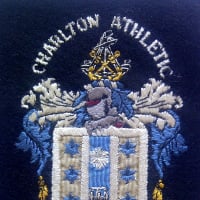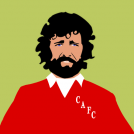Attention: Please take a moment to consider our terms and conditions before posting.
Bobbin' Along - History of the Charlton Badge Part 1
Comments
-

Our very temporary badge based on the Greenwich Borough coat of arms.0 -
New badge to be used on next season's kit.

1 -
Because it was unnecessary. TM was adopted as a knee-jerk because someone else (French rugby club springs to mind, but may not be true) nicked the badge for their own use. Many years later the club realised that adding TM to the badge doesn't actually give any more legal protection. It's still your badge whether you put those letters on it or not.ShootersHillGuru said:Anybody know why the TM was dropped ?1 -

0 -
Wow that's a lovely one. Has the museum had it dry cleaned.Henry Irving said:
Our very temporary badge based on the Greenwich Borough coat of arms.
When I spoke to Gordon Jago (lovely man, said the name-dropper), he was clear that the Greenwich badge never appeared on any kits. The first-team were provided with blazers that had this badge on and were expected to wear it at certain functions.0 -
I didn't imagine the French rugby club. That story came from our very own @Off_ithttps://forum.charltonlife.com/discussion/15357/why-the-trademark. I wonder if he knows any more?0
-
If you're lucky enough to be able to trace your lineage back to the Gunn clan, it's rather nice to see what symbol and badge you discover...

0 -
I think the sword should point downwards as in surrender, in appreciation of our recent history2
-
Here you go, Ali,
Football club badges featuring swords:
Football club badges with red, white and black roundels:
Atletico Chalaco badge:
Charlton badge Croatian style:
Charlton badge Spanish style:
Charlton badge South American style:
Charlton badge South Korean style:
7 -
Sponsored links:
-
or pointed inwards like committing Seppuku.Todds_right_hook said:I think the sword should point downwards as in surrender, in appreciation of our recent history0 -
I tell ya it's a flying roast chicken

Thanks @stig and @Henry Irving for some really interesting history and design insights.
1







